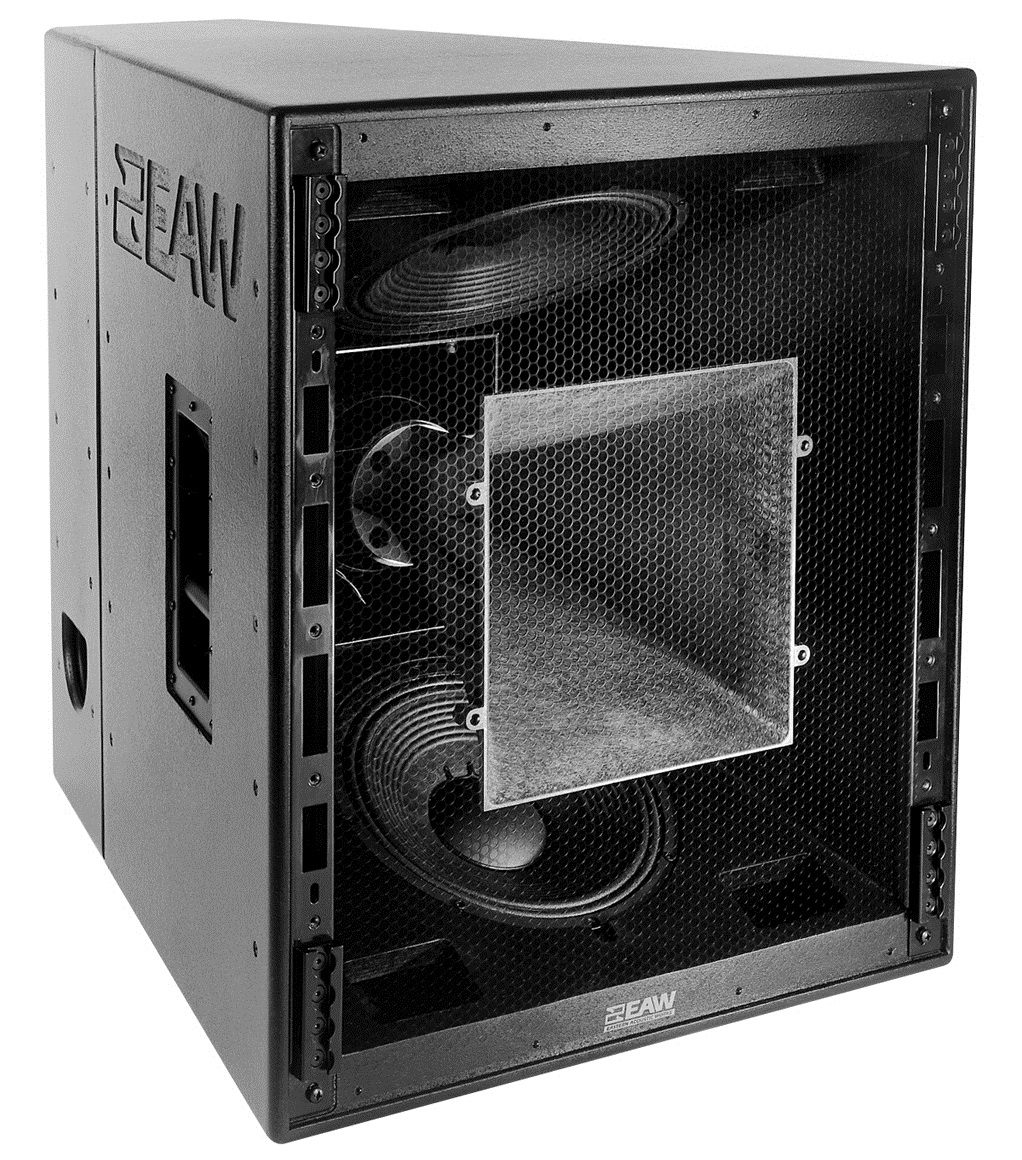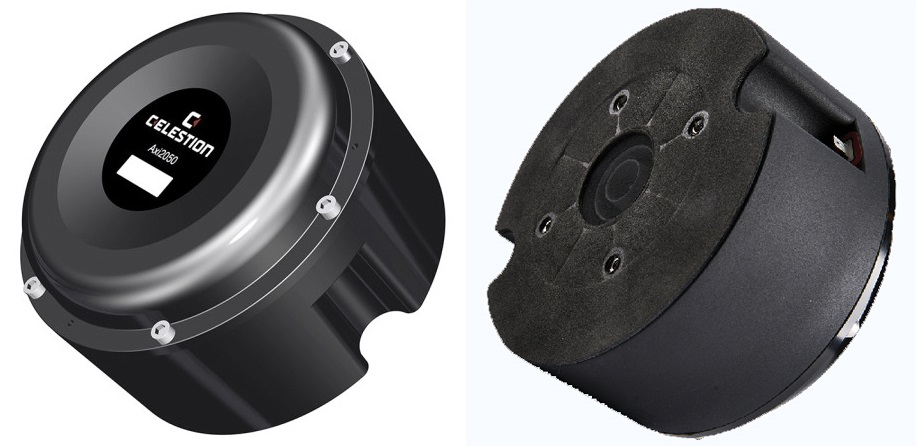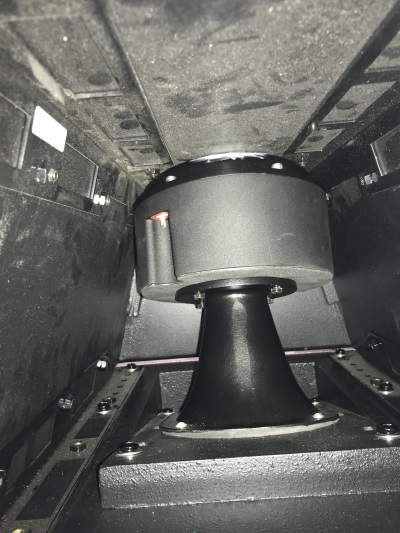
New Tech. Fortuitously, I’d heard of a new device from Celestion called the Axi2050, a unique compression driver (Axi is short for “AxiPeriodic”) stated to operate from as low as 300 Hz all the way to 20 kHz.
It creates a very interesting prospect because the KF750 was designed with a 35 x 35-degree coverage pattern using a large, enclosure-sized horn mouth for a 10-inch mid-range concentrically arranged behind a suspended 35 x 35-degree horn driven by a 2-inch-exit compression driver.

My thinking: if it indeed operates 300 Hz to 20kHz without any serious artifacts, we might just be able to implement the Axi2050 with the midrange horn and eliminate the HF horn and driver. This would further reduce weight while also removing a physical obstruction in the middle of the enclosure, reducing potential adverse effects of HF reflections in the horn mouth. Another big benefit would be the omission of a crossover point anywhere above 300 Hz. If it works, a three-way system would now become two-way.
Power and DSP. The enclosure has a rather large back-box, and according to Gunness, this was in anticipation of eventually providing a self-powered option later. Well, it’s time to finally self-power this rig. I called friends at a premium amplifier manufacturer who supplied us with OEM amplifiers as well as DSP modules, both sized small enough to easily mount inside the existing back-box.
The DSP portion will play a major role because it would allow Gunness to re-voice the system and apply some of his preconditioning techniques. With the incredible advancements made in the world of modern DSP, this could be the icing on the cake for this project.
Rigging. This is an aspect where I’ve always felt that a major improvement can be made. The KF750 was designed as a high-Q, point source system, and because of this, I want the flexibility to mechanically focus the enclosures in both the horizontal and vertical axes like the shape of a pumpkin. I believe in always fixing what I can in the physical realm before applying any sort of DSP, and this approach should create better isolation between enclosures improving array coherency.
It will require modifications to the existing rigging hardware, and the only way we can validate the effectiveness of the approach is by using predictive loudspeaker software. Enter Pepe Ferrer.
Prediction. Ferrer is a noted acoustics instructor based in Barcelona, Spain, and over the years, he’s developed a rather potent software called RiTA that he uses for instructional purposes. He’s located a KF750 rig in Barcelona and has measured its polar response. Armed with this data, and with the ability to model array performance in the software, he plugged the parameters into RiTA software and has confirmed that with additional mechanical isolation of the enclosures, we should see a major improvement even if we do nothing else.

Backup Plan. So where could this plan go off track? We have to consider the effectiveness of the most radical change being attempted: using the Axi2050 with the large horn to cover the entire mid- and high-frequency range. Because the device has never been tested with this horn topology, we must consider the possibility of artifacts, particularly at very high frequencies.
Based on that factor, we’ve also decided to have the original HF horn ready, equipped with the new Beyma neodymium compression driver utilizing a throat adapter to bring the 2-inch horn exit down to 1 inch. Not only will the 1-inch driver provide better transient response, it will also present a much smaller obstacle to the larger horn in the concentric configuration.
Our bet is on the Axi2050 doing the job on its own, but in the world of HotRod, we never know for sure until we try it. Next time I’ll present a review of how the actual results of this process along with interesting details regarding construction and testing along with way.
And keep in mind that if you’d like to hear (and see) the results, be sure to stop by Live Outside at the upcoming Live Design International show in Vegas.
